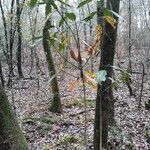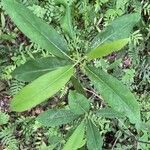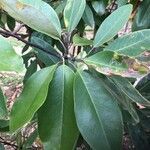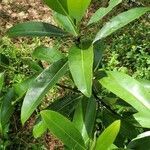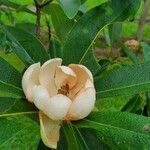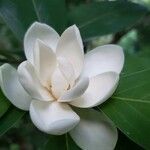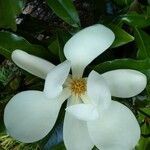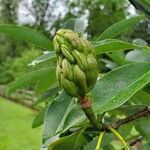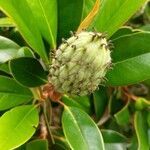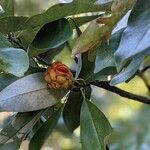Tall shrub or slender tree to 20 m; terminal winter bud 1–2.5 cm, finely silky; lvs aromatic, scattered, leathery, evergreen in the south, oblong to elliptic or oblanceolate,8–15 cm, a third or half as wide, obtuse, basally acute to rounded, the lower surface glaucous and finely hairy; fls fragrant, white, subglobose, ca 5 cm thick; pet 9–12, leathery, obovate, concave, 3–5 cm; fr cone ellipsoid, 3–5 cm, the follicles glabrous; 2n=38. Wet woods and margins of swamps; Fla. to Tex., n. to Pa., N.J., Long I., and e. Mass., chiefly on coastal plain. May–July.
A deciduous tree. It grows 20 m high and spreads 4 m wide. The stem is erect and branching. The leaves are long and oval. They are shiny green but bluish underneath. The flowers are white. They have a scent. They are open and 7.5 cm across.
